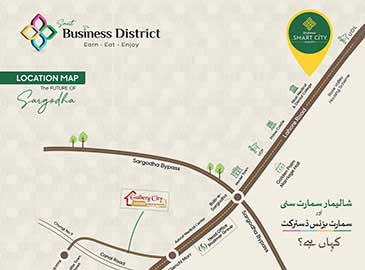Rain Water Harvesting System for Shalimar Smart City (SSC)
Rainwater harvesting is a sustainable and innovative solution that has gained considerable attention in recent years, especially in urban planning and development. As urban areas expand, so does the water demand. Traditional water sources are facing depletion, and communities are exploring alternative methods to ensure a steady water supply. Shalimar Smart City (SSC) has recognized the significance of rainwater harvesting systems as a viable approach to address its water needs and create a more environmentally conscious urban environment.
Introduction to Rainwater Harvesting
Rainwater harvesting is the process of collecting and storing rainwater for later use. It involves capturing rainwater from rooftops, surfaces, and other catchment areas, filtering it, and directing it to storage facilities. This harvested rainwater can be utilized for various purposes, including irrigation, groundwater recharge, and even potable water supply with proper treatment.
Benefits of Rainwater Harvesting
Implementing a rainwater harvesting system in Shalimar Smart City offers numerous advantages:
Water Conservation
Rainwater harvesting reduces the demand for traditional water sources, helping to conserve precious freshwater reserves.
Mitigating Flood Risks
By collecting rainwater and preventing excessive runoff, the risk of flooding in urban areas can be significantly reduced.
Sustainable Landscaping
Harvested rainwater can be used for maintaining green spaces, parks, and gardens, promoting sustainable landscaping practices.
Cost Savings
Utilizing rainwater for non-potable purposes can lead to substantial savings on water bills, benefiting both residents and the city.
Components of a Rainwater Harvesting System
Catchment Area
The surface, such as rooftops, from which rainwater is collected and directed towards the storage system.
Conveyance System
Gutters, downspouts, and pipes transport rainwater from the catchment area to the storage facility.
Storage Facility
Tanks or cisterns where harvested rainwater is stored for future use.
Filtration Mechanism
Filters that remove debris and contaminants from collected rainwater before it enters the storage.
Implementation in Shalimar Smart City
Regulatory Support
The local government plays a crucial role in promoting rainwater harvesting by introducing policies and incentives.
Public Awareness
Educating the residents about the benefits and methods of rainwater harvesting encourages widespread adoption.
Integration with Infrastructure
Integrating rainwater harvesting systems into SSC's infrastructure, including residential and commercial buildings, ensures maximum efficiency.
Challenges and Solutions
Limited Space
In urban areas like SSC, space constraints can be addressed by using innovative storage solutions such as underground tanks or vertical storage units.
Maintenance
Regular maintenance is essential to ensure the longevity and effectiveness of the system. Training programs and local maintenance teams can help tackle this challenge.
Conclusion
Rainwater harvesting presents a promising solution for Shalimar Smart City to overcome water scarcity and promote sustainable urban development. By implementing efficient rainwater harvesting systems and fostering a culture of water conservation, SSC can set an example for other cities striving for environmental equilibrium.
FAQs (Frequently Asked Questions)
Is rainwater safe for drinking after harvesting? Rainwater is generally safe for drinking, but it requires proper filtration and treatment to meet drinking water standards.
Can rainwater harvesting be retrofitted in existing buildings?
Yes, rainwater harvesting systems can be retrofitted in existing buildings with appropriate modifications.
What happens during heavy rainfall when the storage capacity is exceeded?
Overflow systems are incorporated to divert excess rainwater safely to stormwater drains to prevent flooding.
How does rainwater harvesting contribute to sustainable development?
Rainwater harvesting conserves water, reduces flooding, lowers water bills, and minimizes the strain on traditional water sources.
How can I contribute as a resident of Shalimar Smart City?
Residents can participate by installing rainwater harvesting systems at their homes, raising awareness, and following water conservation practices.










